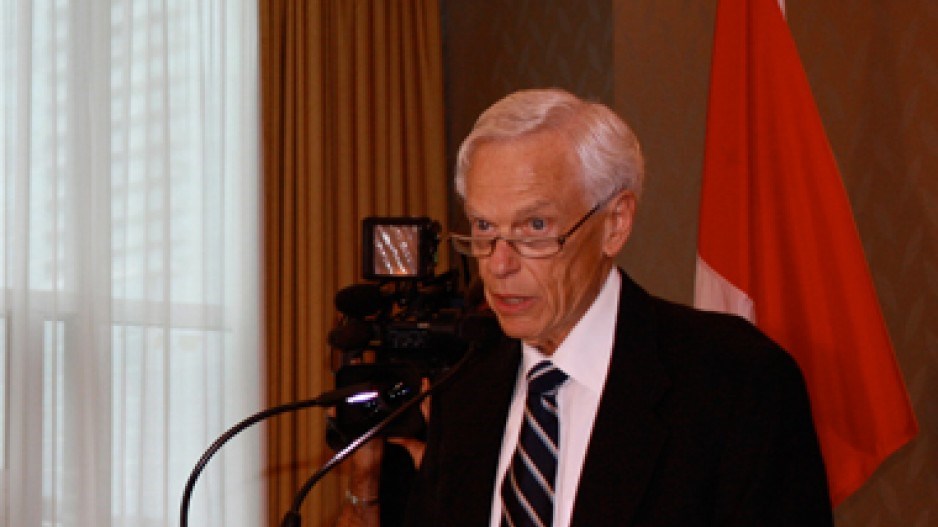If anti fish farm activists were expecting Fisheries and Oceans Minister Dominic LeBlanc to announce this morning that he would place new curbs on salmon farms on the West Coast, they would have been disappointed.
In a press conference in West Vancouver Aug. 8, LeBlanc announced new measures to make good on commitments to implement the 75 recommendations made by the Cohen Commission in 2012 to protect Pacific wild salmon.
But those measures don’t include shutting down or limiting fish farms, as the anti fish farming lobby might have expected.
In fact, it includes $197 million to increase scientific research and monitoring aimed at improving fish health and to “support sustainable aquaculture.”
The funding, which had been announced earlier in the Liberal government’s first budget, will provide “29 new scientists, biologists, oceanographers, and technicians in the Pacific Region.”
It also includes $7.4 million for a recreational fisheries conservation program, with funding to go to 55 community projects aimed at salmon habitat enhancement and restoration.
LeBlanc also announced a round of consultations with first Nations and other stakeholders – to start this fall – on the implementation of the federal government’s Wild Salmon Policy.
That, at least encouraging, said Craig Orr, conservation adviser for Watershed Watch, if the policy is actually implemented.
“It’s an outstanding policy for conserving genetic diversity of wild salmon,” Orr said. “But it didn’t have a champion in DFO, it didn’t have a budget and it languished because of DFO’s conflicted mandate, where Cohen clearly said you can’t be both a promoter and regulator of salmon farming.”
The $29 million Cohen Commission of Inquiry was struck by the Harper Conservative government in response to the near collapse of Fraser River sockeye in 2009.
Only 1.3 million sockeye returned to the Fraser River that year – the third year in a row where low returns had shut down the commercial fishery.
Anti fish farming activists had hoped the commission would zero in on salmon farms as a principle culprit in the collapse, as there are concerns that Atlantic salmon raised in open net pens are spreading disease and sea lice to wild salmon.
In 2012, Justice Bruce Cohenconcluded there was no smoking gun that could explain why the 2009 Fraser River sockeye run virtually collapsed, although he said there was little doubt that warming ocean and river temperatures resulting from climate change are among the many stressors salmon face in their four-year life cycle.
But he also concluded there was evidence that diseases from fish farms can pass to wild fish and therefore recommends new sighting guidelines.
In 2010, just a year after the Fraser River sockeye run nearly collapsed, B.C. saw one of the largest runs in a century – 29 million fish – which called into question some of the theories that might have explained the previous year’s low numbers.
The commission produced 75 recommendations, 30 of which have alredy been implemented, according to LeBlanc.




